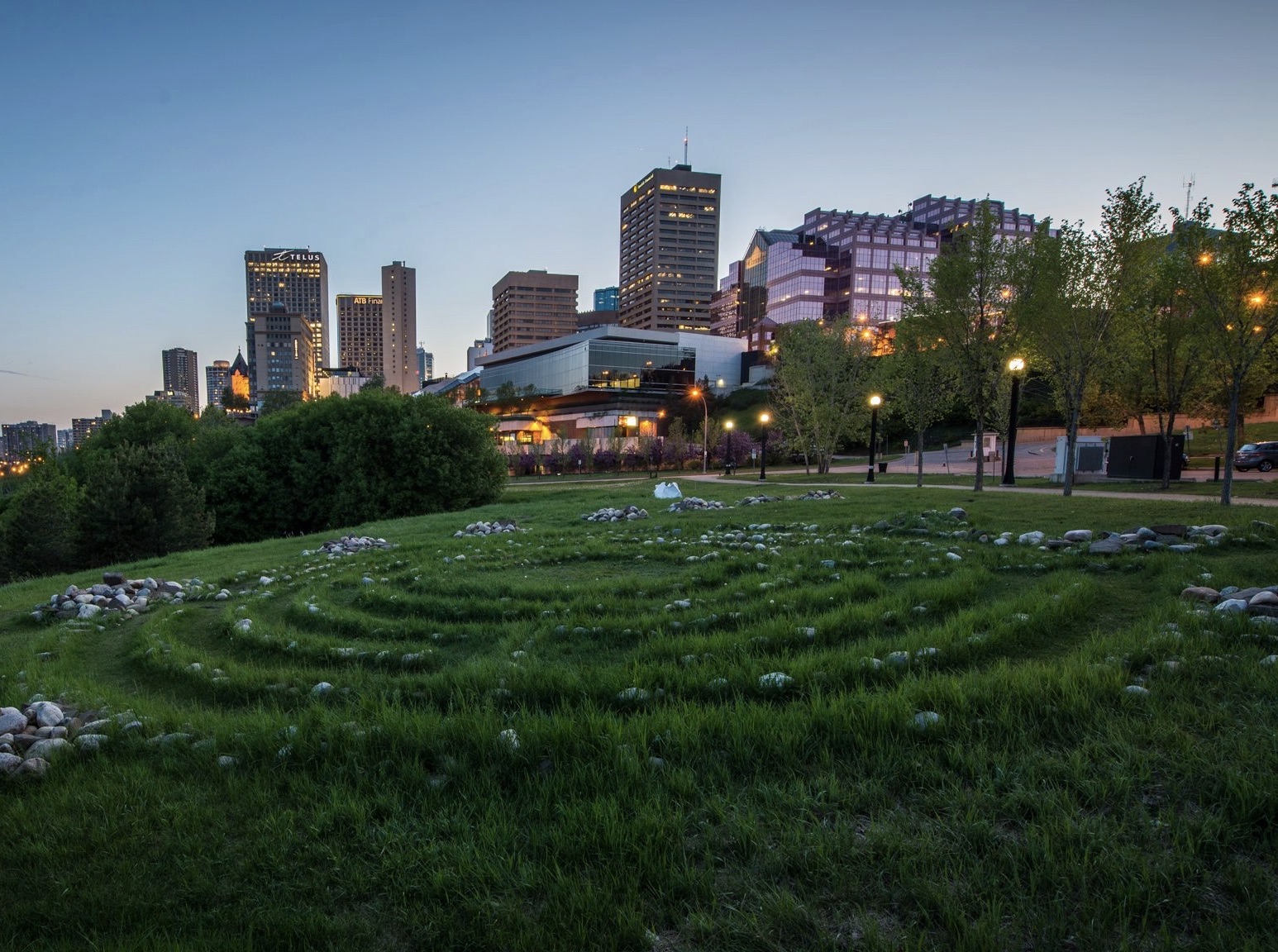Amiskwaciy Waskahikan, which means Beaver Hills House in Cree, is the name of what would become the Edmonton region.This land was the meeting ground for many Indigenous communities including Cree, Saulteaux, Nakota Sioux, Blackfoot and the Métis Peoples. Its history is momentous and considerable, so in celebration of National Indigenous Peoples Day on June 21, explore the great landmarks that make this place our home.
Înîw (EE-nu) means “I am of the Earth” in Cree. Inspired by Indigenous peoples’ connection with the earth, this park has six pieces of artwork that are “inspired by this land,” and all are created by Canadian Indigenous artists. The înîw welcome rocks in this park, located within Queen Elizabeth Park, tell the story of the Cree word înîw — an ode to the ancestral lands of the Indigenous groups.
In the core of downtown Edmonton sits the lovely nature oasis known as Beaver Hills House Park. The handprints marked along the ground of this park create the “Aboriginal Walk of Honour,” which commemorates Indigenous success, and the language, traditions and culture Indigenous peoples bring to Edmonton.
Overlooking the Edmonton River Valley, the Medicine Wheel Garden is located on the rooftop of the Riverview Room. The garden is in the shape of a medicine wheel, to symbolize all four directions, medicines, cycles of life and animals.Indigenous communities have worked with medicine wheels for sacred rituals, ceremonies, everyday blessings, cleansing and visions.
This memorial site was established to acknowledge the Indigenous peoples who lived in these areas for thousands of years. Epcor’s power generating site was previously located on this spot, but human remains were found on the site, and a commitment was made to honour those who were buried there. In August of 2006, a special ceremony was held to rebury the remains and celebrate the official opening of the Rossdale Burial Site.
This effigy/labyrinth, located east of the Edmonton Convention Centre, was established in 2010 by Lea Dorion in partnership with The Works Art and Design Festival. The intention of this site is to enter the labyrinth while having a problem in mind and as you make your way through the maze, you will emerge with a conclusion. Lea Dorion’s analogy behind the Turtle Effigy represents the relationship between Canada’s Indigenous Peoples and European settlers through the marriage of the traditional Indigenous turtle symbol and the Celtic labyrinths.
